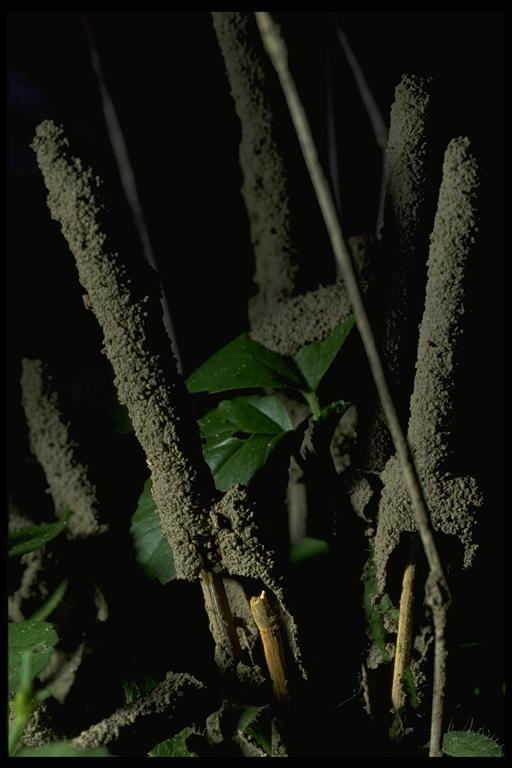
Desert termite, Gnathamitermes tubiformans (Buckley) (Isoptera: Termitidae), castings around plant stems. Photo by Drees.
Common Name: Desert termite
Scientific Name: Gnathamitermes tubiformans
Order: Isoptera
Description: Surface active worker termites are wingless 3/8 inch long creamy white soft-bodied insects with brown heads.
Life Cycle: Simple metamorphosis. Like other termites, this species is a social insect that lives in colonies deep (up to 4 feet) in the soil and contain thousands of individuals. Their biology is similar to the subterranean termite.
Habitat, Food Source(s), Damage: These termites do not tunnel into wood, but rather, remove surface matter from plant matter (cellulose) which they encase. They consume living or dry forage grasses, legumes and other plants, which is digested by symbiotic flagellated protozoans living in the termite’s digestive system. In some areas, “carton” tubes can cover about 6 percent of the soil surface during May through September on shortgrass rangeland in southwest Texas, particularly in overgrazed areas or during dry years. Workers are active on the soil surface at night or during cooler parts of the day. They are active from March through September, particularly after rainy periods. Reduce pastureland for livestock.
Pest Status: Also known as “woodlice,” desert termites are common in south and west Texas and are noticeable in rangeland. They construct fragile mud tubes and sheets of mud around the surfaces of herbaceous and woody plants, litter, dung, fence posts and similar objects. In pastures, their feeding activities can reduce forage for livestock. They are medically harmless to man and animals.
For additional information, contact your local Texas A&M AgriLife Extension Service agent or search for other state Extension offices.
Literature: Borror et al. 1989; Fuchs et al. 1990.